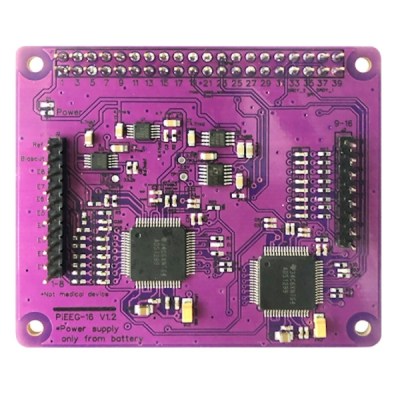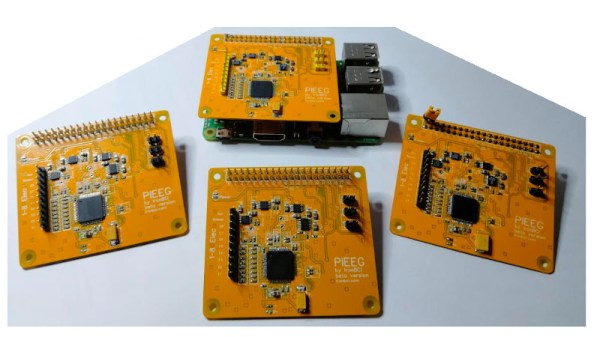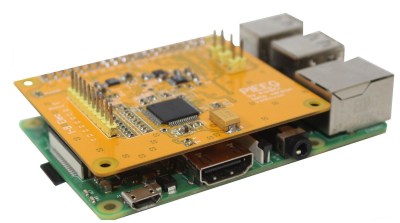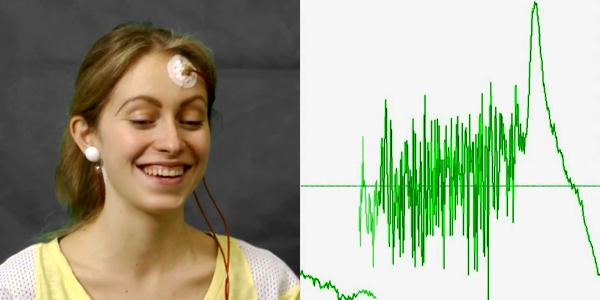Back in 2023, we first brought you word of the PiEEG: a low-cost Raspberry Pi based device designed for detecting and analyzing electroencephalogram (EEG) and other biosignals for the purposes of experimenting with brain-computer interfaces. Developed by [Ildar Rakhmatulin], the hardware has gone through several revisions since then, with this latest incarnation promising to be the most versatile and complete take on the concept yet.
 At the core of the project is the PiEEG board itself, which attaches to the Raspberry Pi and allows the single-board computer (SBC) to interface with the necessary electrodes. For safety, the PiEEG and Pi need to remain electrically isolated, so they would have to be powered by a battery. This is no problem while capturing data, as the Pi has enough power to process the incoming signals using the included Python tools, but could be an issue if you wanted to connect the PiEEG system to another computer, say.
At the core of the project is the PiEEG board itself, which attaches to the Raspberry Pi and allows the single-board computer (SBC) to interface with the necessary electrodes. For safety, the PiEEG and Pi need to remain electrically isolated, so they would have to be powered by a battery. This is no problem while capturing data, as the Pi has enough power to process the incoming signals using the included Python tools, but could be an issue if you wanted to connect the PiEEG system to another computer, say.
For the new PiEEG Kit, the hardware is now enclosed in its own ABS carrying case, which includes an LCD right in the lid. While you’ve still got to provide your own power (such as a USB battery bank), having the on-board display removes the need to connect the Pi to some other system to visualize the data. There’s also a new PCB that allows the connection of additional environmental sensors, breakouts for I2C, SPI, and GPIO, three buttons for user interaction, and an interface for connecting the electrodes that indicates where they should be placed on the body right on the silkscreen.
The crowdsourcing campaign for the PiEEG Kit is set to begin shortly, and the earlier PiEEG-16 hardware is available for purchase currently if you don’t need the fancy new features. Given the fact that the original PiEEG was funded beyond 500% during its campaign in 2023, we imagine there’s going to be plenty of interest in the latest-and-greatest version of this fascinating project.
Continue reading “PiEEG Kit Is A Self-Contained Biosignal Laboratory”

















